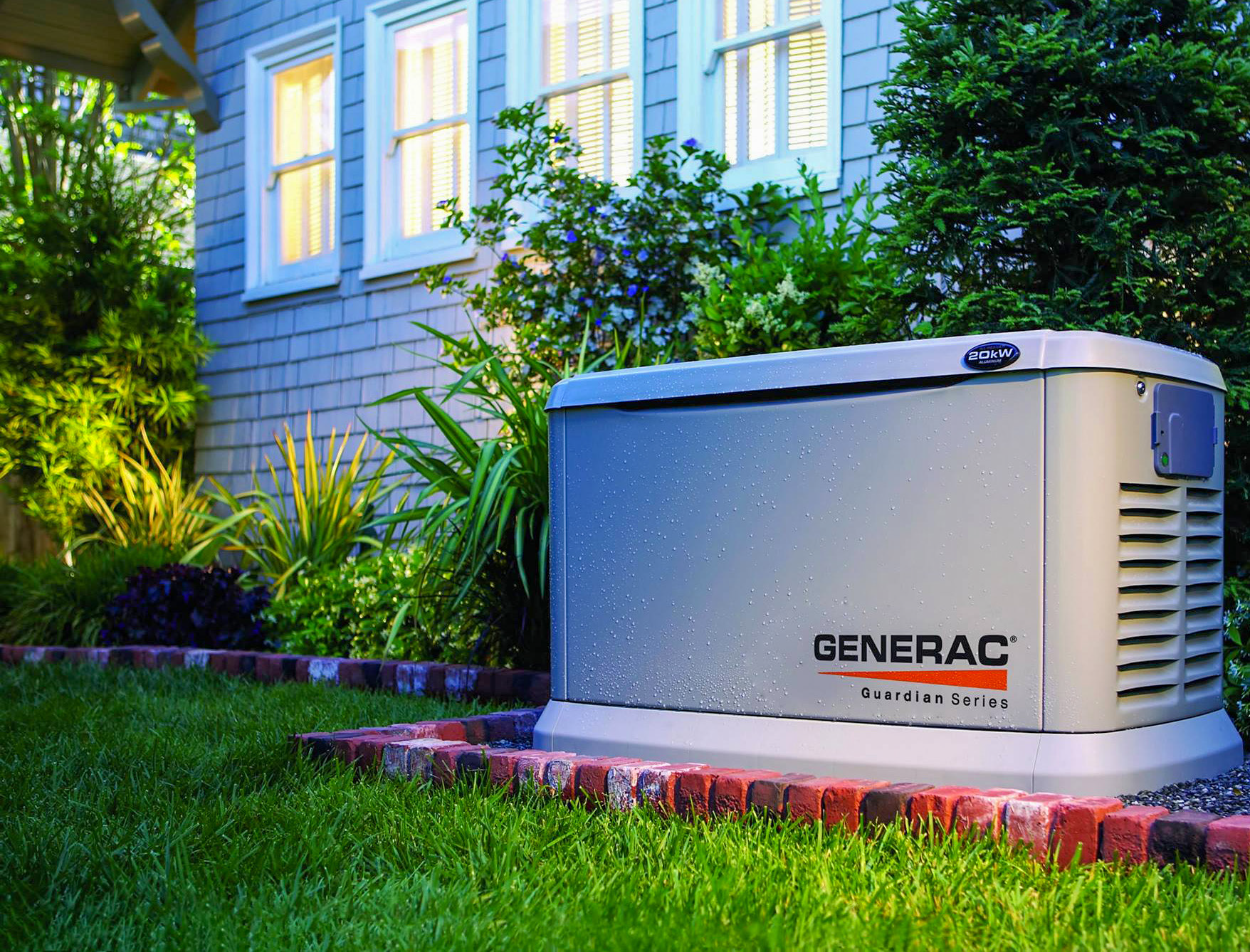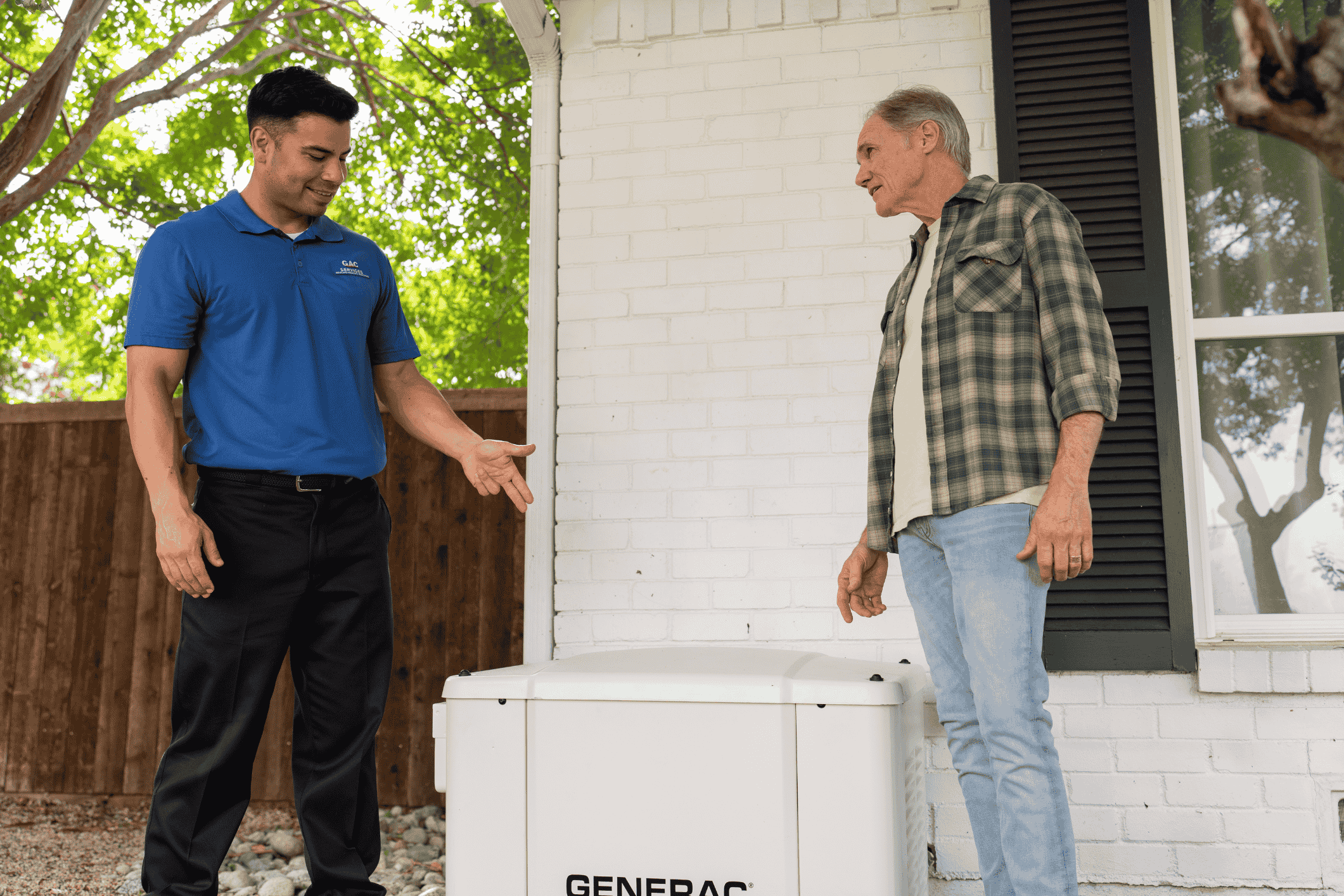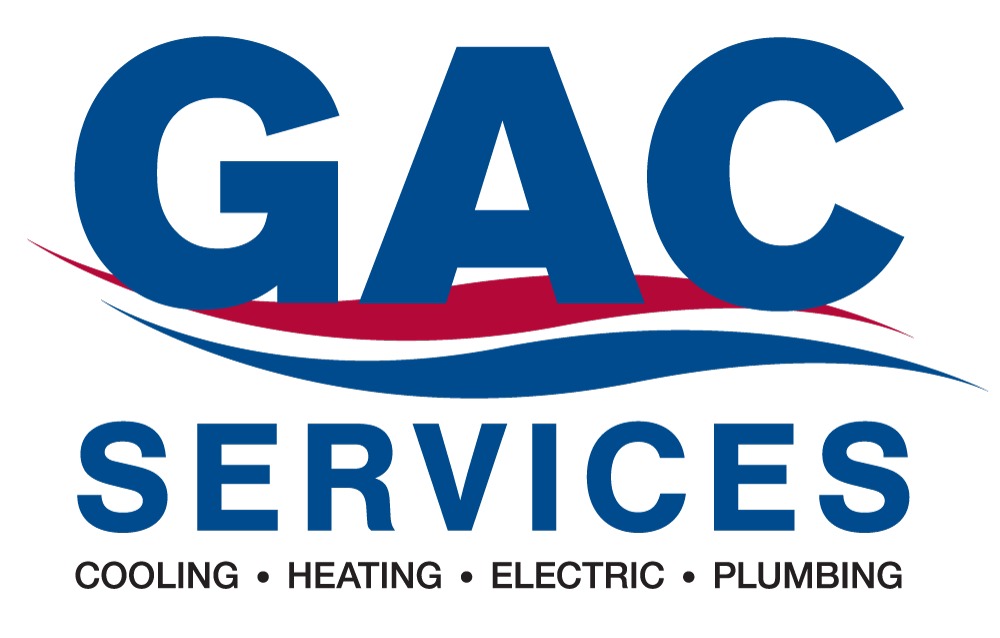If you’ve lived in Maryland for a while, you know how quickly the lights can go out. A summer thunderstorm rolls through, a winter ice storm hits, or heavy winds knock down a few lines and suddenly half the neighborhood is dark. For some folks, it’s an inconvenience. For others, it can mean a fridge full of spoiled food or no heat when it’s below freezing.
That’s why so many homeowners across Montgomery County, Frederick, and Anne Arundel are looking at standby generators. They keep your home powered when the grid goes down. Before you decide to install one, it helps to know what goes into the process.

Two Main Types of Home Generators
Home generators come in two categories: portable units and standby systems. Each one serves a different purpose.
Portable Generators:
Are smaller and cost less up front. They run on gasoline and you have to start them manually when the power goes out. You plug appliances directly into them or run a transfer cord to a few circuits. They work fine for short outages but need to be used outside for safety.
Standby Generators:
Or whole house generators are larger systems that are installed outside your home. They start automatically when the power fails and can run your whole house or just the essentials. They usually run on natural gas or propane and can handle long outages without you having to do anything.
If you lose power a few times a year, a portable model may be enough. If you’ve sat through multi-day outages, a standby generator is the better long-term solution.
Getting the Size Right
One of the biggest things people get wrong is generator size. A system that’s too small can’t handle your major appliances. A system that’s too large wastes fuel and money.
Think about what you need to keep running. For most Maryland homes, that list includes:
- The refrigerator or freezer
- Heating and cooling equipment
- The sump pump or well pump
- A few lights and outlets
- Internet equipment and phones
A licensed electrician will total up the wattage from those systems and help you pick a generator that fits. For most homes in our area, standby generators fall in the 7,000-to-20,000-watt range.
Fuel Choices
In Maryland, you’ll usually choose between natural gas, propane, or diesel.
- Natural gas: connects directly to your home’s gas line and never needs refilling. It’s steady, clean, and perfect for neighborhoods with utility gas service.
- Propane: is common in rural areas or homes without a gas line. It burns cleanly, stores well, and is easy to refill.
- Diesel: is used more for commercial systems and farms than for homes. It works well but needs extra care for storage.
For most Maryland homeowners, natural gas or propane are the easiest and safest options.
What Installation Involves
Installing a generator is not a plug-and-play project. It requires an electrician, permits, and proper site planning. Every county in Maryland has its own code rules. Here’s what the process looks like:
- Pick the spot. The generator needs to sit outside with plenty of airflow and distance from doors and windows.
- Get permits. Montgomery, Frederick, and Anne Arundel Counties all require electrical and gas permits before work starts.
- Connect the power. A licensed electrician installs a transfer switch to safely move power between your house and the generator.
- Test everything. Once hooked up, the system is tested to make sure it starts automatically and runs safely.
Most installations take one to two days. When done by a professional, your system meets Maryland code and keeps its warranty intact.
Safety and Upkeep
Generators are built to make life easier during an outage, but only if they’re used safely. Poor installation or neglect can create fire hazards or carbon monoxide leaks.
Keep these safety tips in mind:
- Never run a generator inside or in an enclosed space.
- Keep it at least five feet from walls, doors, or windows.
- Use outdoor-rated cords if plugging in appliances directly.
- Schedule a yearly inspection.
Maintenance keeps your generator ready when you need it. That means checking oil and coolant levels, cleaning or replacing filters, and running the unit a few times a year so it doesn’t seize up. GAC Services can handle those tune-ups for you and spot small issues before they become expensive repairs.
Why Professional Installation Matters
We get calls every year from homeowners who tried a DIY install or hired a general handyman, only to find the system wasn’t wired correctly or didn’t meet code. A standby generator ties into your home’s electrical and gas systems. It has to be installed by a licensed electrician to keep you safe and meet county requirements.
Our team at GAC Services handles everything from start to finish. We take care of the permits, electrical connections, and final testing. We also help you choose the right size generator and best fuel source for your home. We install generators across Montgomery, Frederick, Anne Arundel, Howard, Carroll, and Prince George’s Counties, and we know the local inspection process by heart.
Once it’s in, we’ll walk you through how it works and how to keep it ready for the next storm.

Getting Your Home Ready for Maryland Weather
Maryland storms can sneak up fast. One night of high winds or ice can leave whole neighborhoods in the dark. A home generator takes that worry away. It keeps your furnace, lights, and fridge running while everyone else is waiting for the power to come back.
If you’re ready to protect your home with a backup generator, talk with the electrical team at GAC Services. We’ll go over your options, answer questions, and make sure your system is installed safely and set up the right way.
Call today to schedule a consultation or request a quote for generator installation in Montgomery, Frederick, Anne Arundel, Howard, Carroll, or Prince George’s County.


